KEY POINTS
- Most adults have experienced troubling childhood experiences that continue to disturb us.
- To a great extent, choices can free us from bondage to the past and facilitate the healing process.
- It is possible to rebound from adverse childhood experiences.
About two-thirds of American adults have survived Adverse Childhood Experiences (ACEs) prior to age eighteen. If unaddressed, ACEs predict a dizzying array of psychological and medical conditions. Survivors can teach us much about healing from ACEs.
Holocaust survivor Dr. Edith Eva Eger, who in her nineties is still a practicing psychologist, has been called the female Viktor Frankl. At age sixteen, Edith was deported to Auschwitz, where she witnessed unspeakable cruelty and death. A gymnast and ballerina, she was forced to dance for the Angel of Death, Dr. Josef Mengele. After WWII, she still encountered anti-Semitism and had to flee the Communists in her native Hungary.
In her inspiring autobiography, The Choice, she candidly recounts her childhood adversities—surviving not only the Nazi death camps, but also a troubled childhood. Her critical mother was stuck in grief and simmering anger over losing her mother as a child. Edith was the invisible sister, gaining a sense of worth only insofar as she could rescue her parents from their loneliness and pain. Teased for her crossed eyes and shamed by rampant anti-Semitism, she developed an inferiority complex and a striving for perfection to satisfy her need for approval. Her experiences taught her much about healing and joy. These are some of her life lessons that can help us all.
- There is peace in a clear conscience. After dancing for Mengele, who personally separated Edith from her mother and sent her to the gas chamber, Edith realized, “He will always have to live with what he’s done. He is more a prisoner than I am” (p.41).
- One survives by transcending self and committing to someone or something outside of self. Edith and her sister lived for each other, constantly watching out for one another. In her darkest times, Edith clung to the memory of her beloved boyfriend and the future together they’d planned.
- You can pay attention to what is lost or what one still has. After their heads had been shaved, her sister nervously asked how she looked. Edith commented on the beauty of her sister’s eyes, which she’d not before noticed.
- Never abandon humor, creativity, or sense of wonder. In the barracks the females held mock beauty pageants and fantasized about creating delicious dishes, In innocent wonder, Edith asked a married woman about the joys of a loving marriage.
- Keep faith alive. Edith’s rather embittered sister lost her faith, choosing to abandon belief in a God who allowed so much suffering. Edith reasoned that it wasn’t God who ran the death camps. She pictured God as being innocent and curious, like she chose to be.
- Be open to kindness. Cynicism keeps us painfully chained to the past. Even in the cruelty of the death camps, Edith found Germans who were secretly kind. To fall on the death march meant certain death by shooting. When she stumbled from exhaustion, her sister and another woman locked hands and kept her upright. The other woman uttered, “You shared your bread.” After dancing for Mengele, Edith had shared the bread that he had disdainfully tossed her. Edith’s kindness had been returned. Soon after being pulled from a pile of dead bodies, something stopped a drunken GI from raping her. He returned the next day to beg forgiveness. For the next six weeks he brought her food and helped her to walk again. Imperfect people are redeemable.
Edith’s suffering and her healing continued long after her liberation. After the war she married and bore three children. In America, her goal was to fit in. She never mentioned what she had endured—in part to spare her children from her suffering and the feeling of being different. For decades she suffered nightmares, panic, and flashbacks, Gradually, she learned that running from her past wasn’t working. Ultimately, she came to these realizations:
- Suffering is not all bad. Along with intense pain, trauma can reveal inner strengths and the confidence that one can survive anything.
- Determine that life will be good again. Trauma survivor might have no control over what happened to them, but they can choose the life they will experience after the trauma. We can choose hope and love, which “comes out as the answer in the end “ (p. 173). We can relish the second chance to have a sense of discovery, to see nature’s beauty, and to take joy in children’s’ eyes. When victimized, we are responsible to choose whether we'll become victims or thrivers.
- Express your story. It is not healthy to bottle up painful emotions. At one point, Edith mused, “What if telling my story could lighten its grip instead of tightening it?” (p. 156). Safe and appropriate ways to tell our story, such as journal writing, in which one expresses the facts, thoughts, and emotion, has been found to be very helpful for most survivors.
- Take a fresh look at what you’ve run from. Thirty-five years after liberation from prison and still suffering PTSD symptoms, Edith accepted an invitation to return to Germany to speak. With trepidation, she determined to put her past to rest so as not to pass on her distress to her children. Standing where Hitler and his supporters had once stood, she released old sorrow and the past she wished she’d had. She forgave Hitler—and herself for not saving her mother. Returning to Auschwitz, she pieced together memory fragments and settled the old memories. Along the way, she saw that nature had restored places linked to old haunting memories.
- Let nothing or no one cause you to doubt your inherent worth. Edith’s losses and mistreatment led her to believe that she didn’t deserve to survive. At one point she was depressed and suicidal. Eventually she realized, “Only I can do what I can do [in] the way I can do it” (p. 173).
Understandably, Edith still finds her memories troubling—one doesn’t fully forget or simply “overcome” haunting memories. But she is no longer stuck in guilt, shame, or anger. She finds joy, particularly in the openness she now shares with her adult children.
To a great degree, we can rebound from ACEs. Fortunately, the recovery process can be greatly facilitated by applying recently developed therapeutic strategies that are gentle and very effective (to be discussed in future posts). And on our healing journeys, the hard-earned wisdom of this courageous wounded healer is our precious gift.
Notes
- Reference: Eger, Edith Eva. (2017). The Choice. New York: Scribner.
- Photo credit: Jordan Engle/Simon & Schuster
- This blog first posted in Psychology Today, June 28, 2021 https://www.psychologytoday.com/us/blog/hidden-wounds
About the Author
Glenn R. Schiraldi, PhD, has served on the stress management faculties at The Pentagon, the International Critical Incident Stress Foundation, and the University of Maryland, where he received the Outstanding Teacher Award in addition to other teaching/service awards. His fourteen books on stress-related topics have been translated into seventeen languages, and include The Adverse Childhood Experiences Recovery Workbook, The Resilience Workbook, The Post-Traumatic Stress Disorder Sourcebook, and The Self-Esteem Workbook. The founder of Resilience Training International (www.ResilienceFirst.com), he has trained laypersons and clinicians around the world on various aspects of stress, trauma, and resilience.

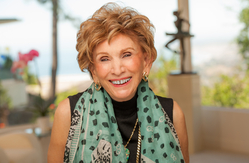
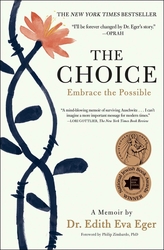
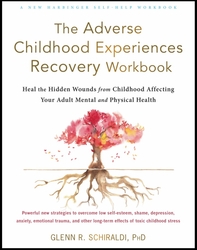
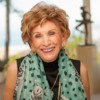
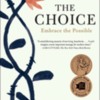
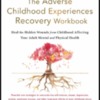
Comments (0)